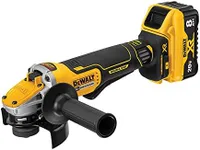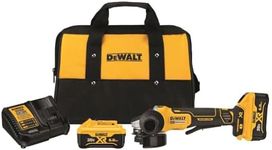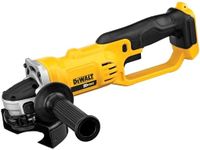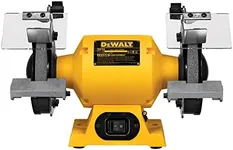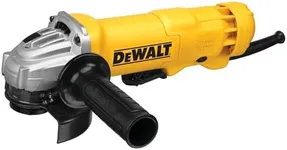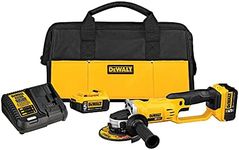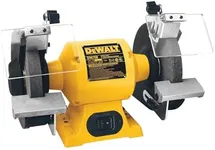Buying Guide for the Best Dewalt Grinders
When choosing a grinder, it's important to think about what kind of tasks you'll be using it for, such as cutting, grinding, or polishing different materials. Grinders come in various sizes and power levels, and picking the right one can make your work easier, safer, and more efficient. Consider how often you'll use the tool, the types of materials you'll work with, and whether you need portability or extra features. Understanding the key specifications will help you match the tool to your needs and avoid buying something that's either too weak or unnecessarily powerful.Disc SizeDisc size refers to the diameter of the grinding or cutting wheel that the grinder can use. This is important because it determines the depth of cut and the size of the area you can work on at once. Common sizes include 4.5 inches, 5 inches, and 7 inches. Smaller discs are lighter and easier to control, making them good for precision work or tight spaces. Larger discs can handle bigger jobs and cut deeper, but they are heavier and may be harder to maneuver. Choose a disc size based on the type of work you plan to do most often—smaller for detail and lighter tasks, larger for heavy-duty or large-area work.
Power SourceGrinders can be powered by electricity (corded), batteries (cordless), or sometimes even compressed air (pneumatic). The power source affects portability and how long you can use the tool at one time. Corded grinders provide consistent power and are good for long jobs, but you need access to an outlet. Cordless grinders offer more freedom to move around, which is great for outdoor or remote work, but they depend on battery life. Think about where you'll use the grinder most—if you need to move around a lot or work away from power sources, cordless might be best; for long, uninterrupted work, corded is usually better.
Motor PowerMotor power is usually measured in amps (for corded) or volts (for cordless). This tells you how strong the grinder is and how well it can handle tough materials. Lower power is fine for light tasks like sharpening or polishing, while higher power is needed for cutting through thick metal or concrete. If you mostly do light work, a lower-powered grinder will be easier to handle and lighter. For heavy-duty jobs, look for higher power to avoid the tool bogging down or overheating.
Speed (RPM)Speed is measured in revolutions per minute (RPM) and shows how fast the disc spins. Higher speeds can cut or grind faster, but they may also wear out discs more quickly and can be harder to control. Lower speeds are safer for delicate work or when using certain attachments. Some grinders have variable speed controls, which let you adjust the speed for different tasks. If you need versatility, look for a model with adjustable speed; if you only do one type of job, a fixed speed may be enough.
Weight and ErgonomicsThe weight and design of the grinder affect how comfortable it is to use, especially for long periods. Lighter grinders are easier to handle and reduce fatigue, while heavier ones may offer more stability for tough jobs. Ergonomic handles and good balance make the tool safer and more comfortable. If you expect to use the grinder a lot or for extended periods, prioritize comfort and weight. For occasional or short tasks, this may be less important.
Safety FeaturesSafety features can include things like adjustable guards, anti-kickback technology, and soft start. These features help protect you from sparks, debris, and sudden movements. Adjustable guards let you direct sparks away from you, while anti-kickback helps prevent the tool from jerking if the disc binds. Soft start makes the tool ramp up to speed gradually, reducing the chance of losing control. If you're new to grinders or value extra protection, look for models with more safety features.
